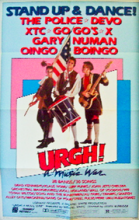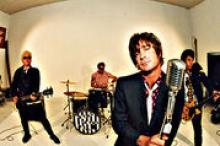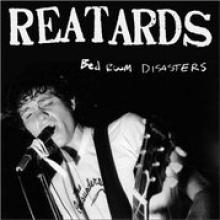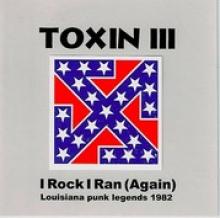Urgh! A Music War: Alternative Music as Product
Urgh! A Music War isn’t a proper snapshot of underground music dating from the last portion of the seventies and into the eighties. In fact, probably the only performance ‘punks’ would consider punk, would be the Dead Kennedy’s song included here.
Sure, Joan Jett cranks out an anthem, but even at the tender age of twenty, she’d already moved a bit away from whatever the Runaways were and further into a hard rock scene, that the singer admittedly enervated with some excitement. Spiky haired punkers, though, probably weren’t moved too much by her track.
Devo’s always good. But again, a bit too weird for straight laced punkers (that makes sense if you think about it). More bizarre than the band itself was the stage show that accompanied it’s performance. Sure, they were probably all rich by the point that Urgh! was filmed. But those giant pillars of flashing lights were a bit outrageous. And not in a good way.
The other Ohio based group on show for the film, Pere Ubu, worked up a track not from one of its first two albums – the strongest in its canon – but instead chose “Birdies” from 1980’s The Art of Walking. Not a sub-par effort, there’s a funky instrumental break about halfway through, but not the band’s crowning achievement.
With the inclusion of some much more visible acts on the roster, the film becomes a curious study in what people at the time perceived to be weird. All the aforementioned bands had at least some tangential tie to the punk world, even if it was only the dates. The same might be said for the Police. But watching the band and it’s ancient guitarist made the ensemble look like it was shoved up there for posterity.
Sting was sporting an English Beat shirt – but he was still clearly a good looking guy who was hooked up with extraordinarily talented players in order to mine his cult of personality. In mentioning the Beat, though, a few JA related acts showed up. The white people ska stuff wasn’t too notable. But Steel Pulse turned in a performance that was at least passable. It still reeked of being post-1975. That’s just how reggae music goes.
Anyway, Urgh! has apparently been difficult to track down since the eighties. No longer, my friends. No longer. I just don’t know if it’s worth splaying out the dollars to see.








